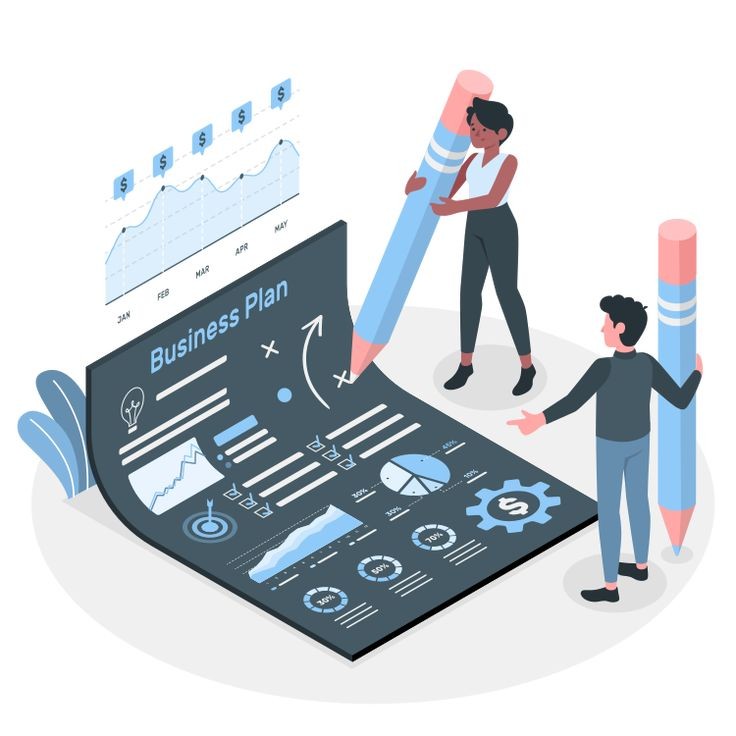How to Start an E-commerc
1. **Market Research:

1.Consumer Behavior:** Analyze how shopping habits are evolving, considering factors like increased mobile usage, preference for sustainable products, and the impact of emerging technologies. How to Start an E-commerc
2.Competitive Landscape:** Identify key players in your niche and evaluate their strategies. Look for gaps in the market or areas where you can differentiate your business. E-commerc⁹
3.Technological Advances:** Stay updated on the latest e-commerce technologies such as augmented reality, artificial intelligence, and voice commerce. Assess how these can enhance the customer experience.
4.Regulatory Changes:** Be aware of any upcoming changes in e-commerce regulations or privacy laws that may affect your business.
5.Global Market Trends:** Consider international markets and assess whether expanding globally is a viable option. Understand cultural nuances and preferences.
6.Supply Chain Challenges:** Anticipate and address potential disruptions in the supply chain, considering factors like shipping delays, sustainability concerns, and global events affecting logistics
7 .Social Media Influence:** Assess the impact of social media on e-commerce. Understand which platforms are popular for product discovery and how influencers can play a role in your marketing strategy.
8.Customer Expectations:** Stay attuned to evolving customer expectations regarding convenience, personalized experiences, and ethical business practices.
9.Eco-Friendly Practices:** Given the growing emphasis on sustainability, consider how incorporating eco-friendly practices into your business can attract environmentally conscious consumers.
10.Payment Innovations:** Keep an eye on developments in payment technologies, such as cryptocurrencies or alternative payment methods, and evaluate whether integrating them aligns with your business model.Regularly update your market research to adapt to changing dynamics and stay ahead of the competition in the dynamic e-commerce landscape of 2024.
2**Business Plan

1.Executive Summary:** Summarize your business concept, goals, and how you plan to achieve them.
2.Business Description:** Detail your business idea, mission, and vision. Explain what sets your business apart.
3.Market Analysis:** Research your industry, target market, and competitors. Understand trends and identify opportunities.
4.Organization and Management:** Outline your business structure, key team members, and their roles.
5.Product or Service Offering:** Clearly describe what you are offering, its features, and how it meets customer needs.
6.Marketing and Sales Strategy:** Define your target audience, marketing channels, and sales approach. Include pricing and promotional strategies.
7.Funding Request (if needed):** Specify the amount of funding required, how it will be used, and the expected returns.
8.Financial Projections:** Provide detailed financial forecasts, including income statements, balance sheets, and cash flow projections.
9.Implementation Plan:** Break down the steps to launch and operate your business. Include milestones and timelines.
10.Risk Analysis:** Identify potential risks and how you plan to mitigate them. This demonstrates preparedness to investors.
11.Appendix:** Include any additional documents, such as resumes, market research, or supporting data.
3**Choose Products

1.Executive Summary:** Summarize your business concept, goals, and how you plan to achieve them.
2.Business Description:** Detail your business idea, mission, and vision. Explain what sets your business apart.
3.Market Analysis:** Research your industry, target market, and competitors. Understand trends and identify opportunities.
4.Organization and Management:** Outline your business structure, key team members, and their roles
5.Product or Service Offering:** Clearly describe what you are offering, its features, and how it meets customer needs.
6.Marketing and Sales Strategy:** Define your target audience, marketing channels, and sales approach. Include pricing and promotional strategies.
7.Funding Request (if needed):** Specify the amount of funding required, how it will be used, and the expected returns.
8.Financial Projections:** Provide detailed financial forecasts, including income statements, balance sheets, and cash flow projections.
9.Implementation Plan:** Break down the steps to launch and operate your business. Include milestones and timelines.
10.Risk Analysis:** Identify potential risks and how you plan to mitigate them. This demonstrates preparedness to investors.
11.Appendix:** Include any additional documents, such as resumes, market research, or supporting data.
4.**Create a website

1.Choose a Domain Name:** Select a unique and memorable domain name that reflects your brand.
2 Select a Platform:** Choose an e-commerce platform such as Shopify,WooCommerce (for WordPress), Magento, or others based on your business needs and technical expertise.
3.Register the Domain:** Purchase and register your chosen domain name through a domain registrar.
4.Set Up Hosting:** Select a reliable hosting provider that aligns with your website platform. Many e-commerce platforms offer hosting as part of their services.
5.Install E-commerce Software:** Install the chosen e-commerce software on your website. Follow the platform’s instructions for setup.
6.Design Your Website:** Customize the website’s appearance to align with your brand. Use a clean and user-friendly design that enhances the shopping experience.
7.Product Listings:** Add your products to the website with high-quality images, detailed descriptions, and pricing information.
8.Set Up Payment Gateways:** Integrate secure payment gateways such as PayPal, Stripe, or others to facilitate online transactions
9.Configure Shipping Options:** Define shipping methods, costs, and delivery times. Ensure transparent communication about shipping policies.
10.Implement Security Measures:** Enhance website security with SSL certificates to protect customer data. Regularly update your software for security patches.
11.Optimize for SEO:** Optimize your website for search engines by using relevant keywords in product descriptions, meta tags, and URLs.
12.Create Policies:** Establish clear terms of service, privacy policies, and return policies. Display them prominently on your website.
13.Add Contact Information:** Provide contact details for customer inquiries. Consider implementing a chat or email support system.
14.Mobile Optimization:** Ensure your website is mobile-friendly to accommodate users on various devices.
15.Test Your Website:** Before launch, thoroughly test your website for functionality, usability, and security.
16.Launch and Promote:** Once satisfied with the setup, officially launch your website. Use various marketing channels to promote your e-commerce store.
17.Monitor Analytics:** Implement analytics tools to track website performance, user behavior, and sales data. Use these insights to refine your strategy.
5.**Marketing
Define Your Target Audience:** Identify and understand your target customers to tailor your marketing efforts.
2.Create a Unique Value Proposition (UVP):** Clearly communicate what sets your products apart from the competition.
3.Social Media Marketing:** Utilize platforms like Instagram, Facebook, and Twitter for engaging content, promotions, and customer interaction.
4.Content Marketing:** Develop blog posts, product guides, and other content to provide value to your audience and improve SEO.
5.Email Marketing:** Build an email list and send targeted campaigns, including promotions, product updates, and newsletters.
6.Influencer Marketing:** Collaborate with influencers in your niche to reach their audience and build credibility.
7.Paid Advertising:** Use platforms like Google Ads, Facebook Ads, or Instagram Ads for targeted advertising to increase visibility.
8.SEO (Search Engine Optimization):** Optimize your website for search engines to improve organic visibility and attract relevant traffic.
9.Affiliate Marketing:** Partner with affiliates who promote your products in exchange for a commission on sales.
10.Loyalty Programs:** Implement customer loyalty programs to encourage repeat purchases and brand loyalty.
11.User-Generated Content:** Encourage customers to share their experiences with your products, creating authentic content.
12.Optimize Product Listings:** Ensure your product descriptions and images are compelling and optimized for search engines.
13.Customer Reviews:** Encourage and showcase positive customer reviews to build trust and credibility.
14.Participate in Online Communities:** Engage in forums, groups, or communities related to your niche to connect with potential customers.
15.Retargeting:** Use retargeting ads to reach users who have visited your site but didn’t make a purchase.

.6.**Customer service
1.Responsive Communication:** Respond promptly to customer inquiries through various channels like email, live chat, or social media.
2.Clear Policies:** Clearly communicate your return, refund, and shipping policies. Make them easily accessible on your website.
3.Knowledgeable Support:** Equip your customer service team with comprehensive product knowledge to assist customers effectively.
4.Personalization:** Address customers by their names and tailor responses based on their specific inquiries or issues.
5.Order Tracking:** Provide a transparent order tracking system so customers can monitor the status of their purchases.
6.Feedback Collection:** Encourage customers to provide feedback on their experiences, and use it to improve your services.
7.Multi-Channel Support:** Offer customer support through various channels, including email, phone, live chat, and social media.
8.FAQ Section:** Maintain a well-organized FAQ section on your website to address common queries and concerns.
9.Proactive Communication:** Keep customers informed about order updates, promotions, and any potential issues that might affect their experience.
10.Empathy:** Demonstrate empathy and understanding when dealing with customer concerns, showing that you value their satisfaction.
11.Resolution Process:** Develop a clear process for resolving customer issues, ensuring a swift and satisfactory resolution.
12.24/7 Support (if feasible):** If possible, provide 24/7 customer support to cater to customers in different time zones.
12.Customer Education:** Educate customers about your products, helping them make informed decisions and reducing potential issues.
13.Customer Education:** Educate customers about your products, helping them make informed decisions and reducing potential issues.
14.Consistency:** Maintain consistent service quality across all customer interactions to build trust and loyalty.
15.Post-Purchase Follow-Up:** Follow up with customers after their purchase to gather
16.Use Customer Service Software:** Implement customer service software to streamline communication, track issues, and manage responses efficiently.
17.Employee Training:** Train your customer service team regularly to keep them updated on products, policies, and best practices.

7.**Scale and iprove

1.Optimize Marketing Strategy:** Refine and optimize your marketing efforts based on data analytics. Emphasize channels that yield the best results and adjust your strategies to align with evolving consumer behaviors.
2.Enhance Website Performance:** Continuously improve your website’s user experience, speed, and mobile responsiveness. A seamless online shopping experience contributes significantly to customer satisfaction and conversion rates.
3.Expand Product Range Strategically:** Introduce complementary products or variations that align with your existing offerings. Strategic expansion can attract a broader audience and increase overall sales.
4.Streamline Supply Chain:** Optimize your supply chain for efficiency and cost-effectiveness. Identify areas for improvement, negotiate with suppliers, and explore technologies that enhance supply chain visibility and coordination.
5.Implement Customer Loyalty Programs:** Develop and enhance customer loyalty programs to encourage repeat business. Rewarding customers for their loyalty can foster long-term relationships and increase customer lifetime value.
**conclusion
In conclusion, scaling and improving your e-commerce business is an ongoing process that requires strategic planning, adaptability, and a commitment to customer satisfaction. By optimizing your marketing strategy, enhancing website performance, strategically expanding your product range, streamlining the supply chain, and implementing effective customer loyalty programs, you can position your business for sustained growth. Regularly assess performance metrics, listen to customer feedback, and stay attuned to industry trends to remain competitive and responsive to evolving market dynamics. Continuous improvement in these key areas will contribute to the long-term success and viability of your e-commerce venture.


